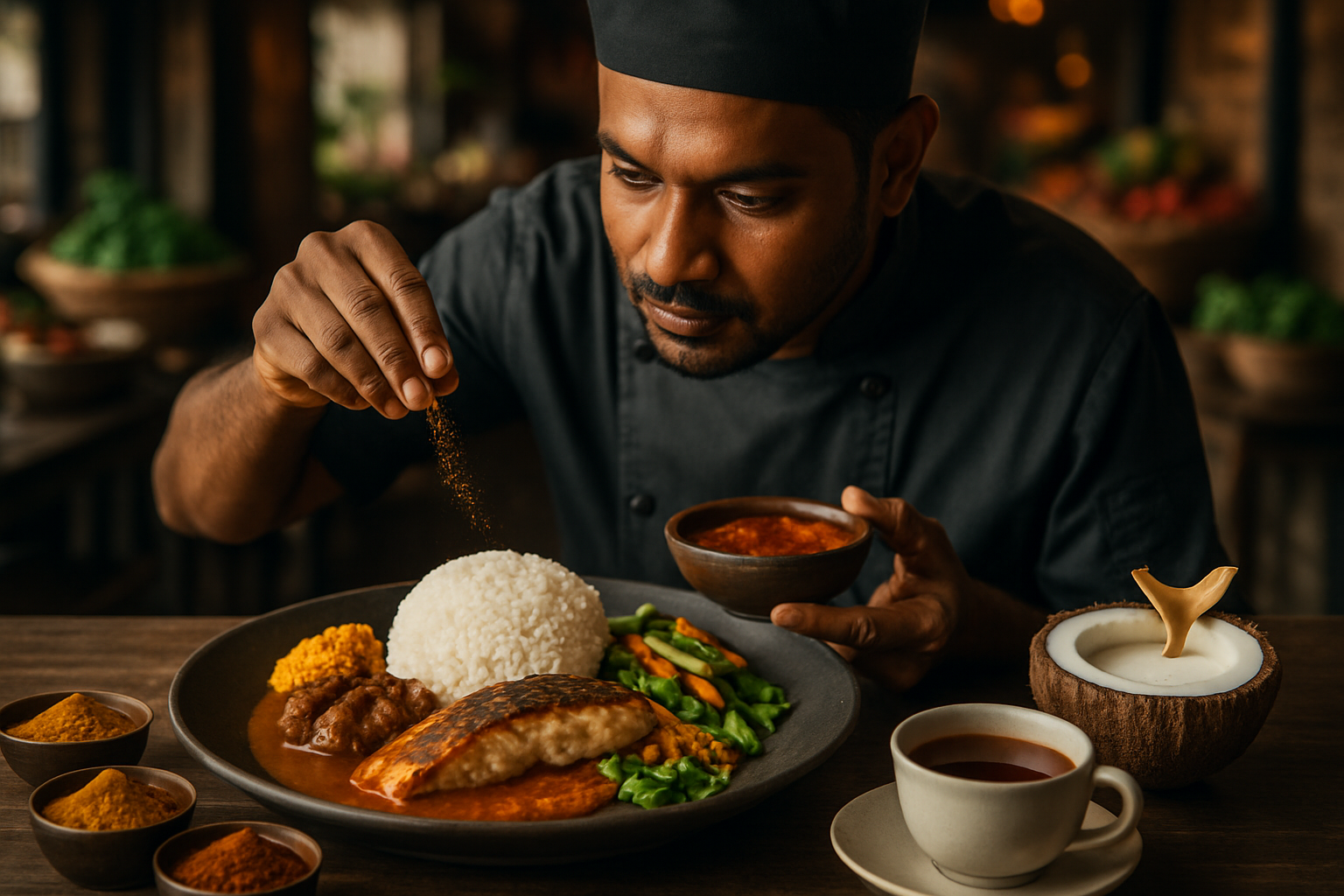Savoring the Spice: Exploring Sri Lankan Cuisine
Embark on a culinary journey through the vibrant flavors of Sri Lanka. From aromatic curries to zesty sambols, this island nation's cuisine is a tantalizing fusion of tastes and textures. Discover the unique spice blends, cooking techniques, and cultural influences that make Sri Lankan food a true gastronomic adventure.

Rice and Curry: The Ultimate Sri Lankan Meal
No exploration of Sri Lankan cuisine would be complete without delving into the iconic rice and curry spread. This isn’t just a single dish but a feast of flavors and textures. A typical meal consists of steamed rice accompanied by several curries, each offering a unique taste profile. You might find a fiery chicken curry, a creamy dhal (lentil curry), and a mild vegetable curry all on the same plate. These are often complemented by mallum (a dish of finely chopped greens mixed with grated coconut), papadum (crispy lentil wafers), and a spicy sambol. The beauty of this meal lies in its balance – the interplay of spicy, sour, and sweet flavors, combined with various textures, creates a truly satisfying eating experience.
Street Food Delights: A Taste of Sri Lankan Life
Sri Lanka’s street food scene is a vibrant reflection of its culinary diversity. Wandering through bustling markets and busy streets, you’ll encounter an array of tempting snacks and quick bites. Kottu roti, a popular street food dish, is a symphony of chopped roti (flatbread) stir-fried with vegetables, eggs, and meat, creating a medley of textures and flavors. Another must-try is the hopper (appam), a bowl-shaped pancake made from fermented rice batter and coconut milk. Served plain or with a perfectly cooked egg in the center, hoppers are often accompanied by spicy sambols or curries. For those with a sweet tooth, kavum (deep-fried rice flour and treacle cakes) and wattalapam (a custardy dessert of coconut milk, palm sugar, and eggs) offer a delightful end to any street food adventure.
Seafood Specialties: Coastal Culinary Treasures
Given Sri Lanka’s island status, it’s no surprise that seafood plays a starring role in its cuisine. The coastal regions offer an abundance of fresh fish, crabs, prawns, and other marine delicacies. Fish ambul thiyal is a standout dish, featuring chunks of tuna simmered in a blend of spices and goraka, a fruit that lends a unique sour flavor. Crab curry, prepared with a rich, spicy coconut milk sauce, is another beloved seafood dish that showcases the island’s culinary prowess. For a quick and flavorful snack, try fish cutlets – crispy, breaded balls filled with spiced fish and potatoes. These seafood specialties not only highlight the bounty of Sri Lanka’s waters but also demonstrate the skillful use of spices and cooking techniques that define the country’s cuisine.
Tea Culture: Beyond the Brew
Sri Lanka, formerly known as Ceylon, is renowned worldwide for its tea production. However, tea in Sri Lanka goes beyond just being a beverage – it’s an integral part of the culinary and social fabric. While a cup of pure Ceylon tea is a treat in itself, Sri Lankans have ingenious ways of incorporating tea into their cuisine. Tea-infused desserts, such as tea-flavored ice cream or tea jelly, are gaining popularity. Some innovative chefs are even using tea leaves as a seasoning in savory dishes, adding a subtle, earthy flavor to marinades and rubs. Tea plantations offer visitors a chance to learn about tea production and participate in tea tastings, where one can appreciate the nuanced flavors of different tea varieties. This deep-rooted tea culture not only reflects Sri Lanka’s colonial history but also its ability to adapt and innovate in the culinary world.
Useful Tips & Facts
• Always eat with your right hand when dining traditionally in Sri Lanka.
• Sri Lankan cuisine is generally spicy, but you can request milder versions in most restaurants.
• Pol sambol, a coconut relish, is a versatile condiment that enhances many Sri Lankan dishes.
• Try king coconut water, a refreshing drink unique to Sri Lanka, known for its health benefits.
• Vegetarians and vegans will find plenty of options in Sri Lankan cuisine, especially in Buddhist areas.
• Don’t miss trying woodapple, a local fruit with a distinctive flavor, often made into juice or jam.
Sri Lankan cuisine is a testament to the island’s rich history, diverse cultural influences, and bountiful natural resources. From the complex spice blends to the innovative use of coconut, from hearty rice and curry meals to delicate seafood dishes, Sri Lankan food offers a gastronomic experience that is both exciting and comforting. As global interest in diverse cuisines continues to grow, Sri Lankan flavors are poised to captivate food enthusiasts worldwide, offering a unique blend of familiar and exotic tastes. Whether you’re an adventurous eater or simply looking to expand your culinary horizons, exploring Sri Lankan cuisine promises a journey of delightful discoveries for your taste buds.





